Related Research Articles

On the morning of 6 December 1917 the French cargo ship SS Mont-Blanc collided with the Norwegian vessel SS Imo in the harbour of Halifax, Nova Scotia, Canada. The Mont-Blanc, laden with high explosives, caught fire and exploded, devastating the Richmond district of Halifax. At least 1,782 people were killed, largely in Halifax and Dartmouth, by the blast, debris, fires, or collapsed buildings, and an estimated 9,000 others were injured. The blast was the largest human-made explosion at the time. It released the equivalent energy of roughly 2.9 kilotons of TNT (12 TJ).
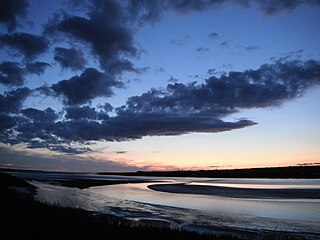
Truro is a town in central Nova Scotia, Canada. Truro is the shire town of Colchester County and is located on the south side of the Salmon River floodplain, close to the river's mouth at the eastern end of Cobequid Bay.
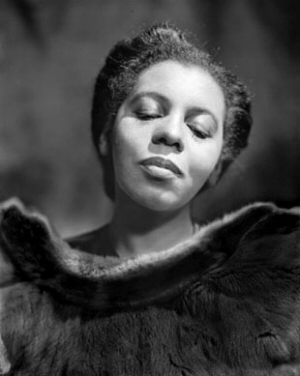
Portia May White was a Canadian contralto, known for becoming the first Black Canadian concert singer to achieve international fame. Growing up as part of her father's church choir in Halifax, Nova Scotia, White competed in local singing competitions as a teenager and later trained at the Halifax Conservatory of Music. In 1941 and 1944, she made her national and international debuts as a singer, receiving critical acclaim for her performances of both classical European music and African-American spirituals. White later completed tours throughout Europe, the Caribbean, and Central and South America.
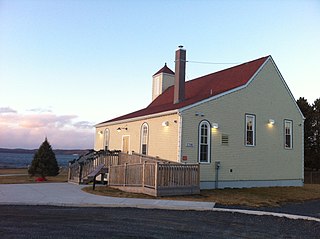
Africville was a small community of predominantly African Nova Scotians located in Halifax, Nova Scotia, Canada. It developed on the southern shore of Bedford Basin and existed from the early 1800s to the 1960s. From 1970 to the present, a protest has occupied space on the grounds. The government has recognized it as a commemorative site and established a museum here. The community has become an important symbol of Black Canadian identity, as an example of the "urban renewal" trend of the 1960s that razed similarly racialized neighbourhoods across Canada, and the struggle against racism.

The North End of Halifax is a neighbourhood of Halifax, Nova Scotia occupying the northern part of Halifax Peninsula immediately north of Downtown Halifax.
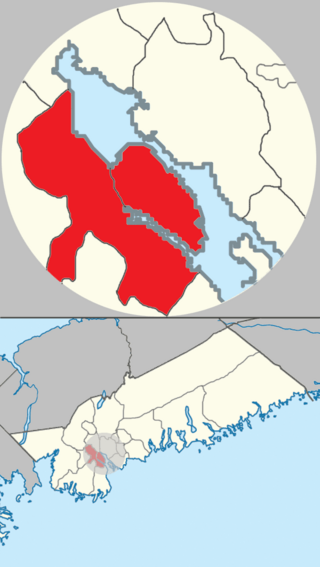
The community of Halifax, Nova Scotia was created on 1 April 1996, when the City of Dartmouth, the City of Halifax, the Town of Bedford, and the County of Halifax amalgamated and formed the Halifax Regional Municipality. The former City of Halifax was dissolved, and transformed into the Community of Halifax within the municipality.
Frances Bannerman was a Canadian painter and poet. She painted in oil and watercolour and made black and white illustrations.

Edith Agnes Smith was a Canadian painter and teacher. She was one of the original members of the Maritime Art Association and served as President of the Nova Scotia Museum of Fine Arts.
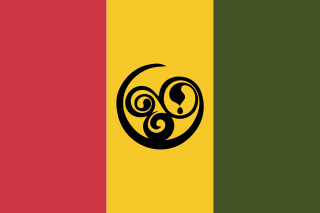
Black Nova Scotians are an ethnic group consisting of Black Canadians whose ancestors primarily date back to the Colonial United States as slaves or freemen, later arriving in Nova Scotia, Canada, during the 18th and early 19th centuries. As of the 2021 Census of Canada, 28,220 Black people live in Nova Scotia, most in Halifax. Since the 1950s, numerous Black Nova Scotians have migrated to Toronto for its larger range of opportunities. The first recorded free African person in Nova Scotia, Mathieu da Costa, a Mikmaq interpreter, was recorded among the founders of Port Royal in 1604. West Africans escaped slavery by coming to Nova Scotia in early British and French Colonies in the 17th and 18th centuries. Many came as enslaved people, primarily from the French West Indies to Nova Scotia during the founding of Louisbourg. The second major migration of people to Nova Scotia happened following the American Revolution, when the British evacuated thousands of slaves who had fled to their lines during the war. They were given freedom by the Crown if they joined British lines, and some 3,000 African Americans were resettled in Nova Scotia after the war, where they were known as Black Loyalists. There was also the forced migration of the Jamaican Maroons in 1796, although the British supported the desire of a third of the Loyalists and nearly all of the Maroons to establish Freetown in Sierra Leone four years later, where they formed the Sierra Leone Creole ethnic identity.
Uniacke Square is a public housing residential area in the north central area of Halifax, Nova Scotia. It is flanked in the northeast by Brunswick Street and to the southwest by Gottingen Street.
Sylvia D. Hamilton is a Canadian filmmaker, writer, poet, and artist. Based in Nova Scotia, her work explores the lives and experiences of people of African descent. Her special focus is on African Nova Scotians, and especially women. In particular, her work takes the form of documentary films, writing, public presentations, teaching, mentoring, extensive volunteer work and community involvement. She has uncovered stories of struggles and contributions of African Canadians and introduced them to mainstream audiences. Through her work, she exposes the roots and the presence of systemic racism in Canada. She aims to provide opportunities for Black and Indigenous youth through education and empowerment.

The Africville Apology was a formal pronouncement delivered on 24 February 2010 by the City of Halifax, Nova Scotia for the eviction and eventual destruction of Africville, a Black Nova Scotian community.

Alice Mary Hagen was a Canadian ceramic artist from Halifax, Nova Scotia. She was trained in china painting, and earned her living through selling painted chinaware and teaching. She was among the artists selected to paint plates for the 1897 Canadian Historical Dinner Service. She gained a high reputation for the quality of her work, for which she won various prizes. She married happily and had two daughters. She continued to paint china while raising her family in Canada and Jamaica. When she was about sixty and her husband had retired she learned to make pottery at her studio in Nova Scotia, and was a pioneer of studio pottery in the area. She continued to produce and sell painted pottery until she was aged 93. Many ceramic artists acknowledged their debt to Alice Hagen as a teacher and an example.

New Horizons Baptist Church is a Baptist church in Halifax, Nova Scotia that was established by Black Refugees in 1832. When the chapel was completed, black citizens of Halifax were reported to be proud because it was evidence that former slaves could establish their own institutions in Nova Scotia. Under the direction of Richard Preston, the church laid the foundation for social action to address the plight of Black Nova Scotians. It is affiliated with the Canadian Baptists of Atlantic Canada.
Mary Marguerite Porter Zwicker was a Canadian artist and art promoter from Halifax, Nova Scotia. Known for her watercolor paintings of landscapes and villages in Nova Scotia, Zwicker exhibited her work at the Royal Canadian Academy of Arts, the Montreal Art Association, and the Art Gallery of Nova Scotia. Together with her husband, Leroy Zwicker, she owned and operated Zwicker's Gallery; for most of the 20th century, Zwicker's Gallery was the only Halifax gallery that routinely held art exhibits open to the public. It still operates.
Audrey Dear Hesson is a Canadian practical craft artist, mainly working with pottery, sculpture, jewelry and textile. She is a member of the Canadian Women Artists History Initiative and was the first black Canadian to graduate from the Nova Scotia College of Art. She is the only living artist in the exhibition curated by David Woods called Discovery: African Nova Scotian Art Pioneers.
Hangama Amiri is an Afghan-Canadian feminist artist, who works in painting and video. Amiri's work has been exhibited in Canada in cities including Halifax, Vancouver, Toronto and Lunenburg. Internationally, her work has appeared in New York, London, Hong Kong, Italy, France, Morocco and Venice.
Corrine Sparks is a Canadian judge. She was the first Black Canadian woman to become a judge in Canada, and the first black judge in the province of Nova Scotia. Her decision in the case R v S (RD), which was controversially overturned on appeal, was later upheld by the Supreme Court of Canada in a leading decision on reasonable apprehension of bias.
Shauntay Grant is a Canadian author, poet, playwright, and professor. Between 2009 and 2011, she served as the third poet laureate of Halifax, Nova Scotia. She is known for writing Africville, a children's picture book about a black community by the same name that was razed by the city of Halifax in the 1960s. "Africville" was nominated for a 2018 Governor General’s Literary Award. The book also won the 2019 Marilyn Baillie Picture Book Award, and was among 13 picture books listed on the United States Board on Books for Young People's 2019 USBBY Outstanding International Books List.
Henry M. Rosenberg was a painter whose style varied from realism to tonalism, symbolism and impressionism, as well as a printmaker and educator. He was Principal of the Victoria School of Art and Design from 1898 to 1910. Writers on the history of art in Nova Scotia call him the "grand old man of Nova Scotian art".
References
- 1 2 Archives, Nova Scotia (March 18, 2007). "Nova Scotia Archives - Nova Scotia Births, Marriages, and Deaths". Nova Scotia Archives.
- 1 2 "Blind Contour Homage #28 - "Sweet Peas" 1911 - Edith Hester Macdonald-Brown". February 9, 2019.
- ↑ Adrienne Johnson (2015). Through African Canadian Eyes: Landscape Painting by Nineteenth and Early Twentieth Century African Canadians (MA thesis). Concordia University.
- ↑ "Black Art Matters: Fifteen Canadian Artists to Know". Art Canada Institute - Institut de l’art canadien. Retrieved 2023-01-08.
- ↑ Simmonds, Veronica. "Uncovering history". The Coast Halifax. Retrieved 2023-01-08.